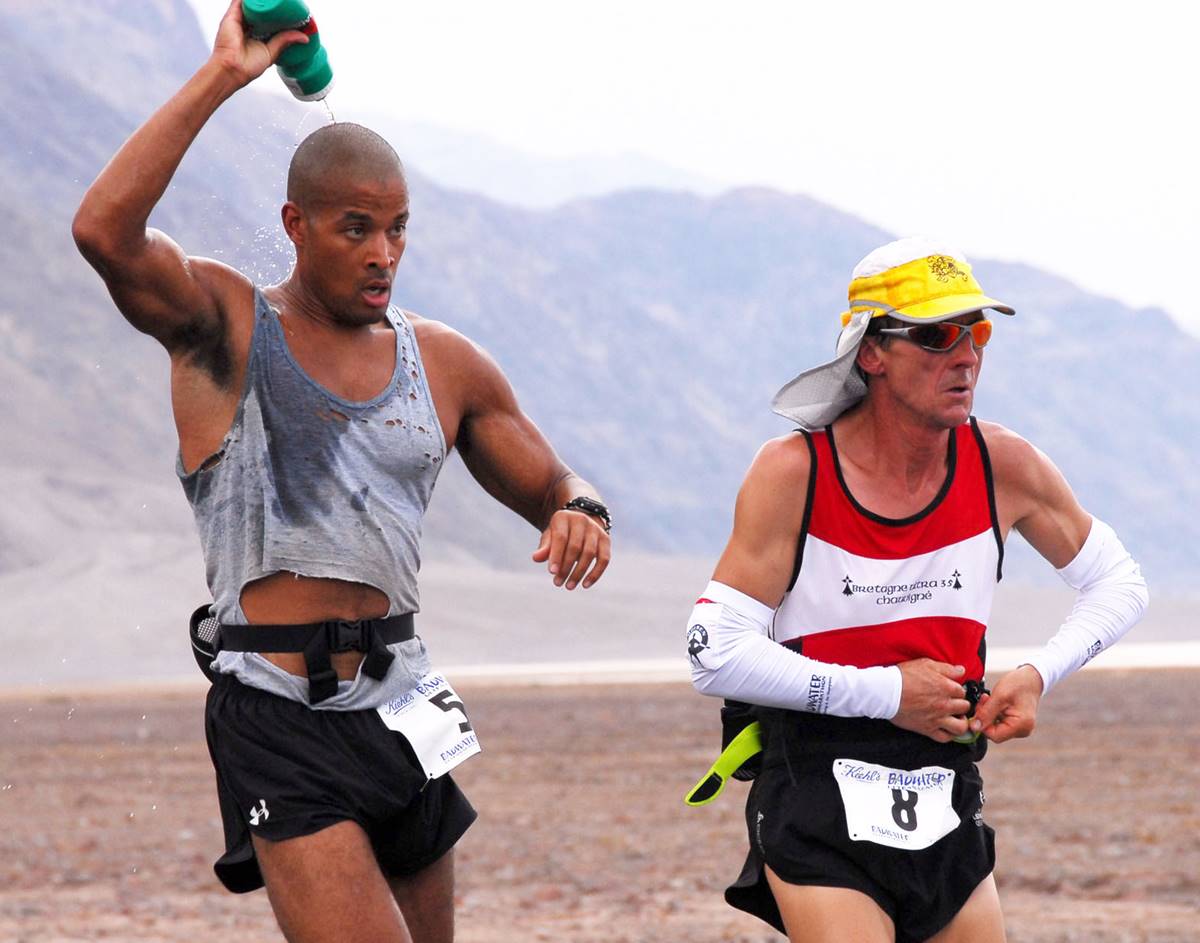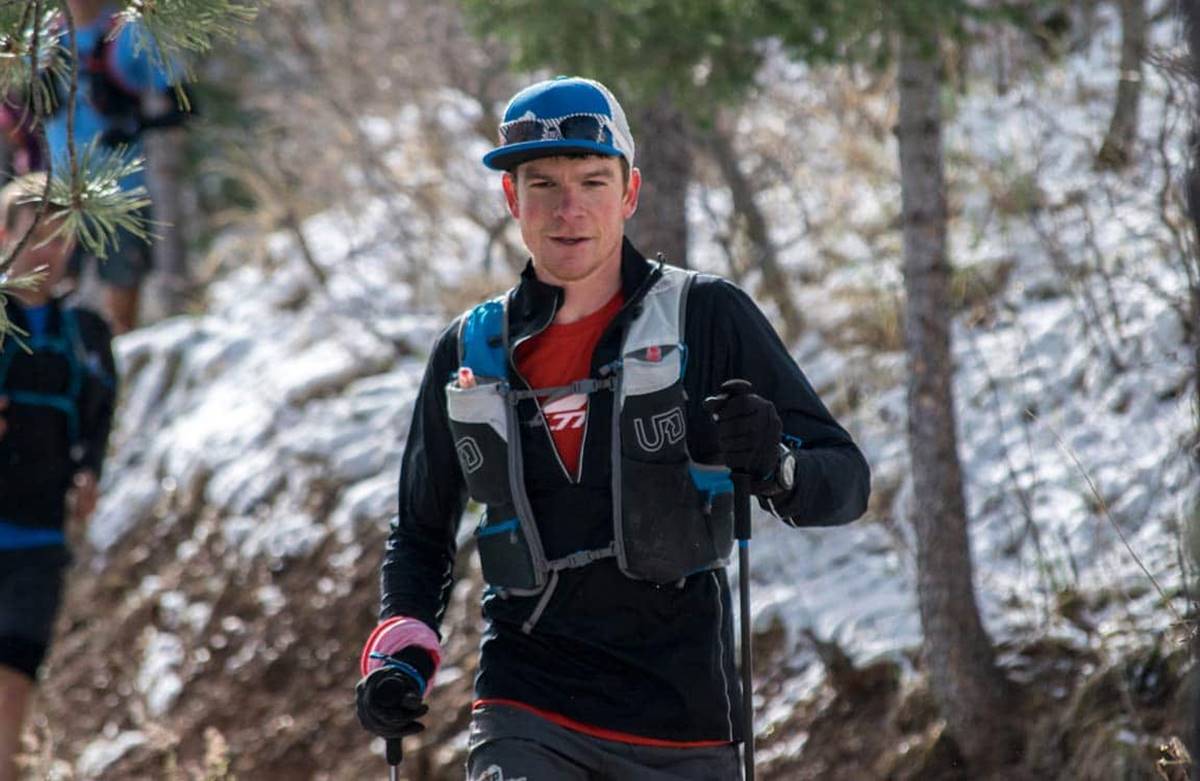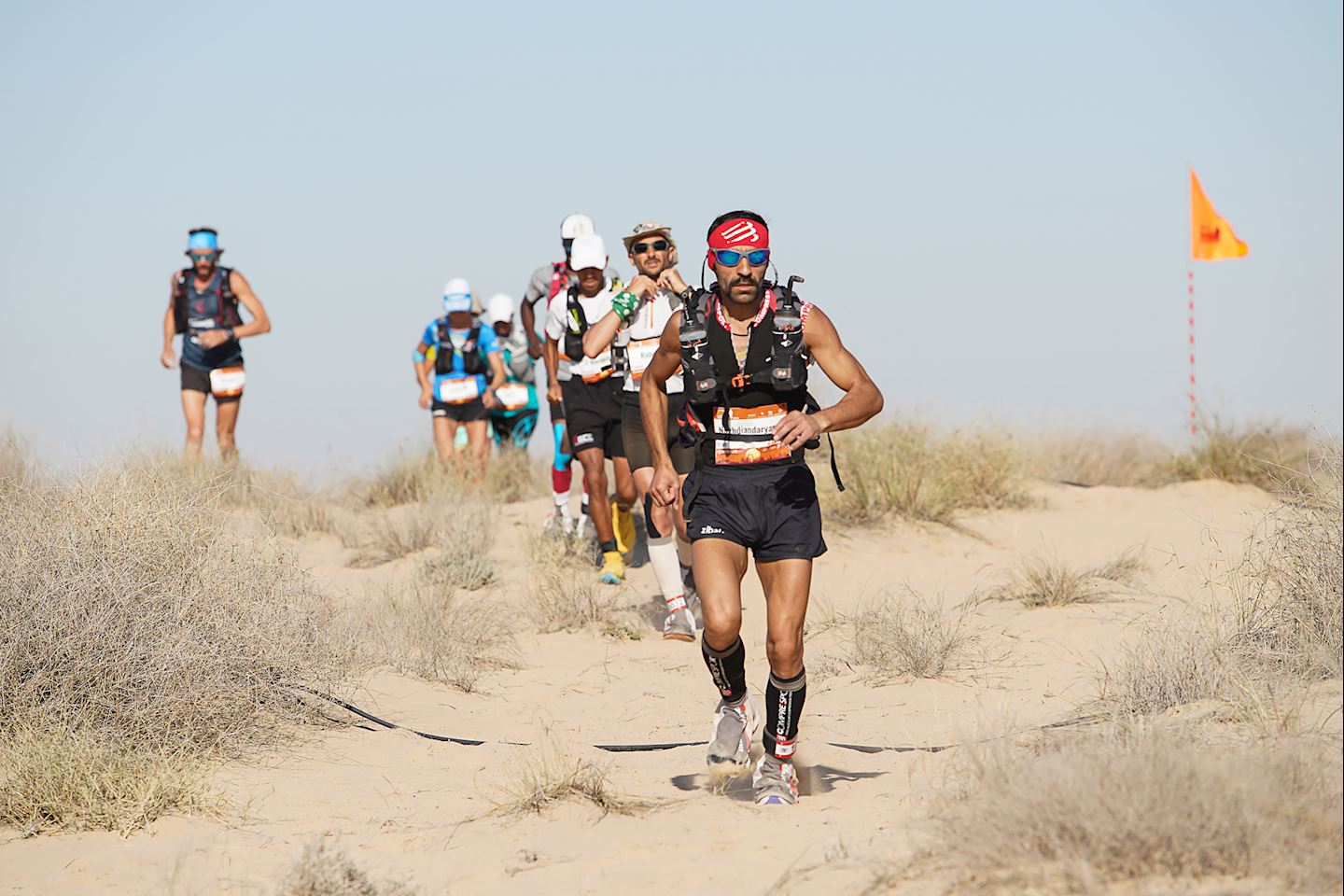

Featured
What Is An Ultramarathon?
Modified: August 19, 2023
Discover the world of ultramarathons and what sets them apart from traditional races. Featured articles, tips, and training advice for endurance athletes.
Introduction
An ultramarathon, also known as ultra, is a race that goes beyond the traditional marathon distance of 26.2 miles (42.195 kilometers). It is a test of endurance and mental strength, pushing athletes to their limits and beyond. Ultramarathons can be run on various terrains, including roads, trails, mountains, and deserts, and can range from 50 kilometers to several hundred miles in length. These races attract a special breed of runners who thrive on the physical and mental demands of the sport.
Ultramarathons have gained significant popularity in recent years, with more and more people seeking to challenge themselves beyond the boundaries of traditional running distances. The appeal of ultramarathons lies in the sense of adventure, the opportunity to explore stunning landscapes, and the camaraderie among participants. It is a sport that transcends the limits of traditional running and offers a unique experience that cannot be replicated.
In this article, we will explore the world of ultramarathons, delving into their definition, different types, historical significance, training methods, challenges and rewards, as well as famous ultramarathon runners. Whether you are a seasoned runner or simply curious about the world of endurance racing, this article will provide you with a comprehensive overview of what ultramarathons are all about.
Definition of an Ultramarathon
An ultramarathon is a long-distance running race that exceeds the official marathon distance of 26.2 miles (42.195 kilometers). It is a test of endurance and mental fortitude, pushing athletes to their physical limits. Ultramarathons can vary in distance, ranging from 50 kilometers to several hundred miles. These races can take place on a variety of terrains, including roads, trails, mountains, and deserts.
Unlike traditional marathons, which are well-known and popularized events, ultramarathons have a smaller, yet dedicated, following. These races require a unique set of skills and strategies due to the extended time and distance involved. Ultramarathon runners must have exceptional physical fitness, mental toughness, and the ability to adapt to challenging environmental conditions.
Ultramarathons can be further categorized into different types based on the distance covered. The most common types include:
- 50K: This is the entry level distance for many ultramarathons. It covers roughly 31 miles and provides a stepping stone for runners to transition from marathons to longer races.
- 50 Miles: This distance is often seen as a challenging milestone for ultramarathon runners. It requires a higher level of endurance and mental strength.
- 100K: A step up from 50 miles, the 100K distance is reserved for those who have proven their ability to handle longer races. It covers roughly 62 miles.
- 100 Miles: Considered the pinnacle of ultramarathons, the 100-mile distance is a grueling challenge that tests even the most experienced runners. It often takes competitors over 24 hours to complete.
As ultramarathons have gained popularity, other unique race formats have emerged, such as timed events where runners compete to cover the maximum distance within a defined time limit, and multi-day stage races where participants run consecutive days with varying distances.
Despite the physical demands and mental hurdles involved, ultramarathons attract individuals from all walks of life. They offer a chance to explore the limits of human potential, discover breathtaking landscapes, and foster a sense of personal growth and accomplishment.
Different Types of Ultramarathons
Ultramarathons come in a variety of formats, each offering a unique challenge and experience for participants. Here are some of the different types of ultramarathons:
- Trail Ultramarathons: These races take place on off-road trails, often winding through forests, mountains, or other natural landscapes. They are known for their scenic beauty and technical terrain, which requires runners to navigate through uneven surfaces, steep inclines, and sometimes challenging weather conditions.
- Road Ultramarathons: Road ultramarathons are held on paved surfaces, typically following a designated course or route. They offer a different running experience, with smoother terrain and a more predictable environment.
- Mountain Ultramarathons: As the name suggests, these ultramarathons take place in mountainous regions, challenging participants with significant elevation gain and rugged trails. Runners must contend with steep climbs, treacherous descents, and thin air, making mountain ultramarathons among the most physically demanding.
- Desert Ultramarathons: Desert ultramarathons are held in arid and sandy environments, such as the Sahara or Atacama Desert. Runners must battle scorching temperatures, relentless sun exposure, and difficult sand dunes. These races test both physical endurance and mental resilience.
- Multi-day Ultramarathons: In multi-day ultramarathons, runners cover long distances over several consecutive days. Each day’s stage usually has a different distance, and participants must manage their physical and mental fatigue while aiming to complete the entire event within the given timeframe.
- Timed Ultramarathons: Timed ultramarathons involve running for a specific duration, usually 6, 12, 24, or even 48 hours. The goal is to cover the maximum distance within the allotted time. This format allows runners to focus on pacing and endurance without the pressure of completing a set distance.
- Self-supported Ultramarathons: In self-supported ultramarathons, runners carry all their necessary gear, supplies, and food. These races often take place in remote or extreme environments, where runners must rely on their skills and resourcefulness to complete the distance.
Each type of ultramarathon presents its own unique set of challenges, attracting runners with different preferences and strengths. Whether it’s the rugged beauty of trail running, the adrenaline of mountainous terrain, or the mental toughness required for desert races, there is an ultramarathon format to suit every adventurous spirit.
History of Ultramarathons
The history of ultramarathons dates back to the ancient civilizations, where long-distance running was a means of communication and survival. The concept of running beyond conventional distances has been present in various cultures throughout history. However, the organized sport of ultramarathoning as we know it today began to take shape in the 19th century.
One of the earliest recorded ultramarathons was the infamous Paris-Brest-Paris cycling race. In 1876, a French newspaper challenged cyclists to cover the 1,200-kilometer distance between Paris and Brest within a set time limit. Inspired by this event, foot races of similar distances started to gain attention, laying the foundation for ultramarathons.
The first major ultramarathon event, known as the London to Brighton race, took place in 1886. The race covered a distance of 55 miles and quickly became a significant event in the sporting calendar. Ultramarathons continued to gain popularity in the early 20th century, with race organizers pushing the boundaries of distance and endurance.
The modern ultramarathon movement gained momentum in the 1970s and 1980s, thanks to the efforts of dedicated athletes and organizers. In 1977, the Western States Endurance Run became the first organized 100-mile trail race in the United States, setting the stage for a new era of ultramarathons.
Another pivotal moment in the history of ultramarathons was the founding of the International Association of Ultrarunners (IAU) in 1984. The IAU aimed to promote and develop the sport of ultrarunning worldwide, establishing standardized race distances, rules, and regulations.
In recent decades, ultramarathons have experienced a surge in popularity and diversity. New events, race formats, and distances have emerged, catering to the growing demand of endurance athletes worldwide. Today, ultramarathons are held on every continent and cover a wide range of terrains and distances.
Notable ultramarathons include the Badwater Ultramarathon in Death Valley, California, known for its extreme heat and challenging course, and the Ultra-Trail du Mont-Blanc, a prestigious trail race that circumnavigates the Mont Blanc massif, covering a distance of over 100 miles.
The history of ultramarathons is a testament to the human spirit of endurance and determination. From humble beginnings to global recognition, ultrarunning has evolved into a vibrant and inclusive community of athletes who continually push the boundaries of what is possible in long-distance running.
Training for an Ultramarathon
Preparing for an ultramarathon requires a well-thought-out training plan that focuses on building endurance, strengthening the body, and developing mental resilience. Here are some key considerations when training for an ultramarathon:
- Gradual mileage increase: Ultramarathons require runners to cover significantly longer distances than traditional marathons. It is crucial to gradually increase weekly mileage to allow the body to adapt and minimize the risk of injury. Slowly build up your distance over several months, incorporating long runs and back-to-back runs on consecutive days.
- Hill training: Many ultramarathons take place in mountainous or hilly regions, making hill training essential. Include regular hill repeats and long, sustained hill climbs to build strength and endurance in your leg muscles.
- Train on varied terrain: To prepare for the diverse terrain of ultramarathons, incorporate trail runs, road runs, and even treadmill workouts into your training. This will help develop the necessary stability, agility, and adaptability required for different race conditions.
- Practice fueling and hydration: Ultramarathons often last several hours or even days, so it’s essential to practice your nutrition and hydration strategy during training. Experiment with different energy gels, snacks, and drinks to find what works best for you and train your body to tolerate and absorb fuel while running.
- Build mental resilience: Ultramarathons push athletes to their limits, both physically and mentally. Develop mental toughness and resilience through visualization exercises, positive self-talk, and training in adverse conditions. Practice staying focused and motivated during long training runs to prepare for the mental challenges of race day.
- Incorporate strength and cross-training: Strength training is crucial for injury prevention and overall performance. Include exercises that target the legs, core, and upper body to improve overall strength and stability. Additionally, cross-training activities like cycling, swimming, or yoga can provide excellent supplemental conditioning and help prevent overuse injuries.
- Rest and recovery: Recovery is just as important as training. Allow for rest days and incorporate active recovery activities, such as gentle walks or yoga, into your routine. Get enough sleep and listen to your body’s signals to prevent burnout and reduce the risk of injury.
Remember, every runner is unique, and it’s important to tailor your training plan to suit your individual needs and goals. Seek guidance from experienced coaches or join a running group to gain further insights and support. With consistent training, proper preparation, and determination, you can successfully conquer the challenges of an ultramarathon and achieve your personal best.
Challenges and Rewards of Ultramarathons
Ultramarathons present a unique set of challenges that test athletes both physically and mentally. However, they also offer a range of rewards and experiences that make the journey worthwhile. Let’s explore the challenges and rewards of ultramarathons:
- Physical Demands: Ultramarathons push the limits of physical endurance. Runners must train their bodies to withstand extended periods of exertion, challenging terrain, and adverse weather conditions. The constant pounding on the legs, fatigue, and muscle soreness are part of the physical challenges that participants must overcome.
- Mental Resilience: Ultramarathons require mental strength and resilience. The sheer length of the race, mental fatigue, and occasional self-doubt can be overwhelming. Runners must learn to push through mental barriers, stay focused, and maintain a positive mindset to keep moving forward.
- Environmental Factors: Ultramarathons take place in a variety of challenging environments such as scorching deserts, freezing mountains, or dense forests. Dealing with extreme temperatures, altitude, humidity, or unpredictable weather conditions adds an extra layer of difficulty to the race.
- Logistical Planning: Proper planning and organization are crucial in ultramarathons. Runners need to arrange support crews, pack appropriate gear, and ensure they have sufficient food, drinks, and supplies for the duration of the race. Navigation and pacing strategies also play a crucial role in successfully completing the distance.
- Self-discovery and Personal Growth: Ultramarathons provide a transformative experience for many participants. The intense physical and mental challenges force runners to dig deep within themselves, pushing beyond their perceived limits. Through this process, they discover newfound strength, resilience, and determination, leading to personal growth and self-discovery.
- Community and Camaraderie: The ultramarathon community is known for its camaraderie and support. Participants often form deep bonds during the races, encouraging and helping one another along the way. The shared experiences and mutual support create a sense of belonging and a tight-knit community of like-minded individuals.
- Sense of Adventure: Ultramarathons allow runners to explore stunning landscapes and visit remote locations that are often inaccessible to the general public. The sense of adventure and the opportunity to experience nature’s beauty firsthand are rewards that go beyond the challenge of the race itself.
- Achievement and Satisfaction: Crossing the finish line of an ultramarathon is an immense achievement that brings a sense of satisfaction and accomplishment. The amount of effort and dedication required to complete such a challenging event leaves runners with a deep sense of pride and fulfillment.
Undertaking an ultramarathon is not just about the finish line; it’s about the personal journey, growth, and the memories created along the way. While the challenges are daunting, the rewards and experiences gained make it a truly remarkable and life-changing endeavor.
Popular Ultramarathons Around the World
Ultramarathons have gained significant popularity worldwide, with races taking place in various countries and attracting participants from all corners of the globe. Here are some of the most popular ultramarathons around the world:
- Western States Endurance Run: Known as the “granddaddy” of 100-mile trail races, the Western States Endurance Run takes place in California’s Sierra Nevada Mountains. It follows a challenging terrain and has a rich history that dates back to its inception in 1974.
- Ultra-Trail du Mont-Blanc (UTMB): The UTMB is a prestigious trail race that winds through France, Italy, and Switzerland, circumnavigating the Mont Blanc massif. Covering a distance of over 100 miles with significant elevation gain, it tests the endurance and resilience of its participants.
- Badwater Ultramarathon: Held in the scorching heat of Death Valley, California, the Badwater Ultramarathon is often dubbed the toughest footrace on Earth. Covering a distance of 135 miles, it takes runners through the unforgiving desert terrain and demands extreme physical and mental fortitude.
- Comrades Marathon: The Comrades Marathon is a legendary ultramarathon held in South Africa. It covers an iconic 56-mile route between the cities of Durban and Pietermaritzburg, attracting international runners to experience the camaraderie and history of this prestigious event.
- Tarawera Ultramarathon: Taking place in New Zealand’s North Island, the Tarawera Ultramarathon showcases the breathtaking beauty of the country’s native forests, lakes, and volcanic landscapes. It offers different distances, ranging from 21 kilometers to the challenging 100-miler.
- Marathon des Sables: Known as the toughest footrace on Earth, the Marathon des Sables is a multi-day ultramarathon held in the Sahara Desert. Participants cover a distance of approximately 156 miles over six stages, enduring extreme heat and challenging sand dunes.
- Lake Baikal Ice Marathon: Held on the frozen surface of Lake Baikal in Siberia, Russia, this unique ultramarathon presents a surreal experience. Participants run distances of 10, 42, or 70 kilometers, challenging themselves on the ice, while surrounded by the pristine beauty of the world’s deepest lake.
These are just a few examples of the many renowned ultramarathons held around the world. Each race offers its own distinct challenges, stunning scenery, and a chance to test one’s physical and mental limits. Participating in these events not only provides an opportunity to showcase athletic prowess but also allows runners to immerse themselves in different cultures and connect with fellow ultrarunners from diverse backgrounds.
Famous Ultramarathon Runners
Ultramarathons have produced a plethora of incredible athletes who have pushed the boundaries of human endurance. These runners have become renowned for their exceptional performances and inspirational journeys. Here are a few famous ultramarathon runners who have left a lasting impact on the sport:
- Dean Karnazes: Known as the “Ultramarathon Man,” Dean Karnazes is one of the most recognizable figures in the world of ultrarunning. He has completed numerous ultramarathons, including the Western States Endurance Run, Badwater Ultramarathon, and the Spartathlon.
- Kilian Jornet: Hailing from Spain, Kilian Jornet is considered one of the greatest trail runners of all time. He has won a multitude of ultramarathons, including the Ultra-Trail du Mont-Blanc and the Hardrock 100. Jornet’s exceptional endurance and mountain-running skills have earned him a legendary status in the sport.
- Scott Jurek: Scott Jurek is a legendary American ultrarunner known for his unprecedented success at the Western States Endurance Run. He won the race a record-breaking seven consecutive times from 1999 to 2005. Jurek has since become a prominent figure in promoting plant-based nutrition for endurance athletes.
- Ann Trason: Ann Trason is a trailblazing American ultrarunner who dominated the sport throughout the 1990s. She held multiple records, including the women’s course record at the Western States Endurance Run for over two decades. Trason’s achievements and her ongoing commitment to the sport have inspired generations of female ultrarunners.
- Yiannis Kouros: Considered one of the greatest ultramarathon runners of all time, Yiannis Kouros from Greece has set over 160 world records in long-distance races. He holds the fastest times for distances ranging from 100 kilometers to 1,000 miles, and his achievements have solidified his status as an ultrarunning legend.
- Lizzy Hawker: Lizzy Hawker is a British ultrarunner known for her phenomenal success in mountain trail races. She has won the Ultra-Trail du Mont-Blanc five times and set the women’s record for the Transvulcania Ultramarathon. Hawker’s dedication to the sport and her remarkable performances have earned her widespread recognition.
These are just a few examples of the exceptional athletes who have left a lasting impact on the world of ultrarunning. Their unwavering determination, extraordinary achievements, and relentless pursuit of excellence have not only inspired fellow athletes but have also contributed to the growth and recognition of ultramarathons as a mainstream sport.
Conclusion
Ultramarathons are not just races; they are transformative experiences that push runners to their limits and beyond. These extraordinary events require immense physical endurance, mental fortitude, and a passion for exploration. Ultramarathons offer a unique opportunity for individuals to challenge themselves, discover hidden strengths, and experience the awe-inspiring beauty of the natural world.
From the historical roots of ultramarathons to the diverse formats and iconic races held around the world, the sport has evolved and captured the imagination of both seasoned runners and adventure enthusiasts alike. The challenges faced during the preparation and race itself, whether it’s the physical demands, mental resilience required, or the unpredictable elements, provide a profound sense of accomplishment and personal growth.
Ultramarathons also foster a strong sense of community and camaraderie among participants. The shared experiences, mutual support, and the bonds formed during these grueling events create lasting connections and a support network that extends beyond the race itself.
As the sport continues to gain popularity, ultramarathons serve as a testament to the indomitable human spirit and the pursuit of pushing beyond boundaries. They inspire individuals to reach new heights, overcome obstacles, and embrace the adventure of the unknown.
Whether you are an experienced ultrarunner or someone intrigued by the idea of embarking on this challenging journey, the world of ultramarathons beckons. It is a realm filled with remarkable athletes, breathtaking landscapes, and experiences that test the limits of physical and mental endurance.
So lace up your shoes, embrace the adventure, and explore the extraordinary world of ultramarathons. The journey awaits, ready to reward you with personal growth, unforgettable memories, and a profound sense of achievement.









